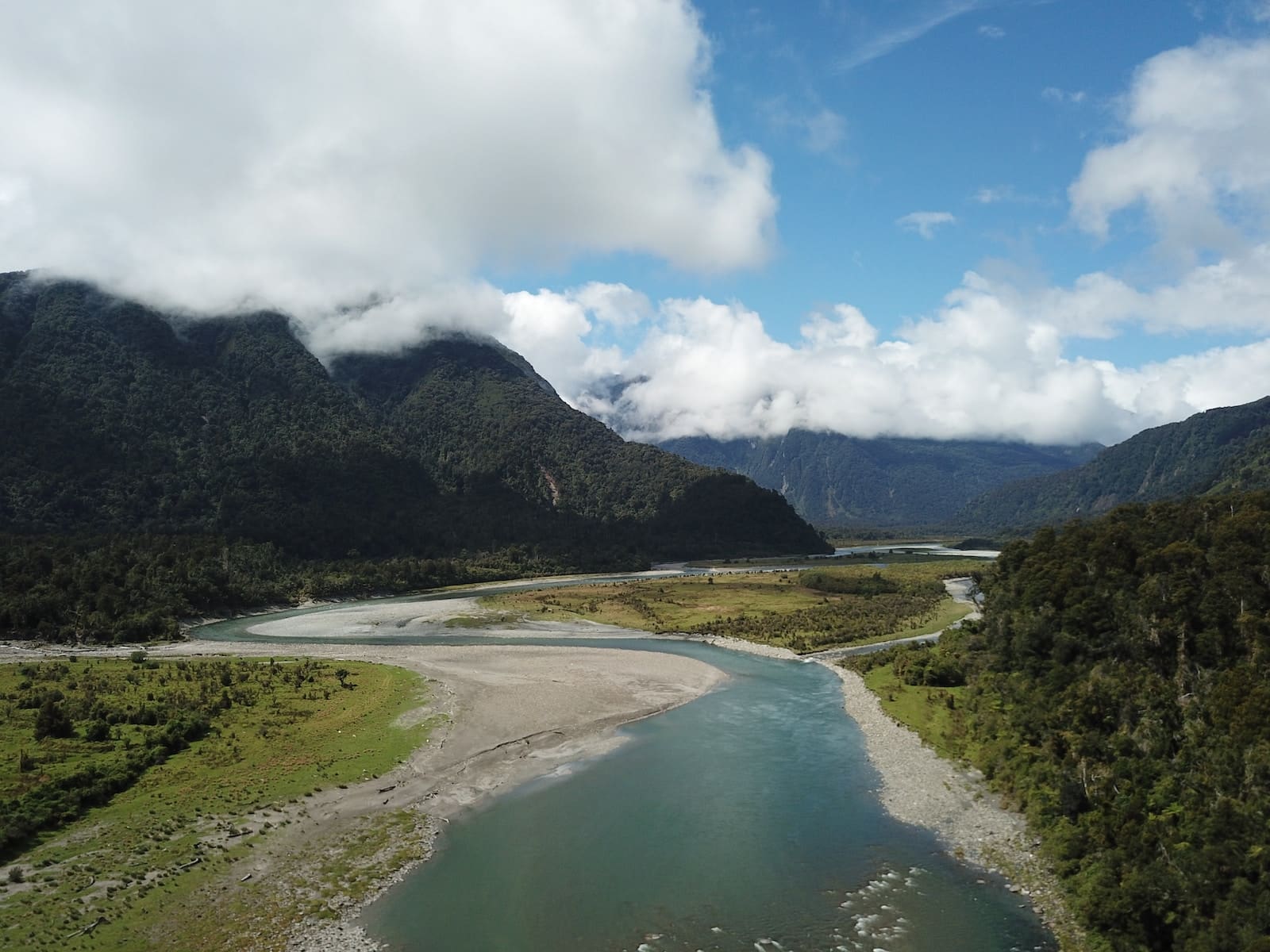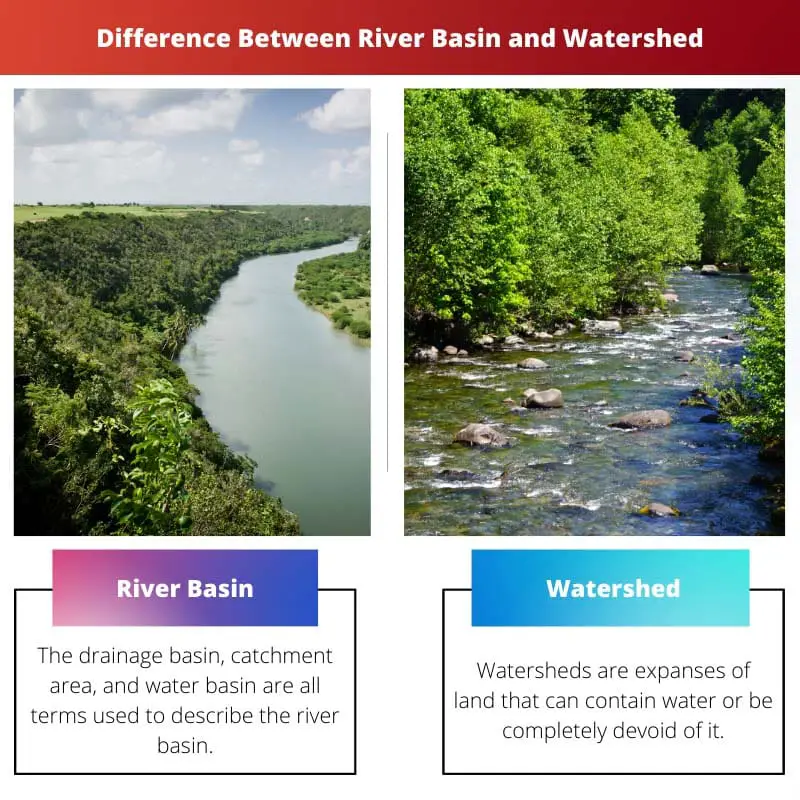The presence of the precious element water makes life possible on the planet Earth. We all understand the importance of water; without it, we would perish.
Although it is naturally present in many water bodies such as rivers, seas, and oceans, only 1% of water is drinkable. The remaining water is unclean and salty.
River basins and watersheds are two different land areas that collect water and drop it into other water bodies, including rivers, lakes, and oceans.
Moreover, watersheds are comparatively smaller areas than river basins and can be present in river basins. Watersheds can be found all over the place, including beneath our feet.
Key Takeaways
- A river basin includes all the land drained by a river and its tributaries, while a watershed is the area of land that drains into a single body of water, such as a river, lake, or ocean.
- River basins are more extensive than watersheds, as they encompass multiple watersheds.
- Watershed management focuses on preserving water quality and preventing pollution, while river basin management addresses broader issues like flood control, water allocation, and habitat conservation.
River Basin vs Watershed
The difference between river basins and watersheds is that river basins are larger basins formed naturally due to geographical regions that transfer the water into rivers. However, a watershed collects water from rain and melted snow and drains into the nearest water bodies. We can say watershed is a subset of the river basins.

The drainage basin, catchment area, and water basin are all terms used to describe the river basin. The drainage divide is an imaginary line that separates all of the river basins.
Water drains into several basins as a result of the divide. Moreover, such basins include watersheds that also divide two adjacent river basins.
Watersheds are expanses of land that can contain water or are completely devoid. Rivers, lakes, precipitation, and glacier melting all contribute to the water in the sheds.
Understanding hydrological cycles in depth requires a thorough comprehension of the watershed. The watershed can be natural and topographical as per the area.
Comparison Table
| Parameters of Comparison | River Basin | Watershed |
|---|---|---|
| Size | The river basin is large. | The watershed is much smaller. |
| Drains into | The river basin discharges the water into larger water bodies. | Water drains the water into smaller streams and rivers. |
| Shape | The shape of the river basin is like a bowl having a curve depression in the middle. | Watershed is of different shapes. |
| Importance | It is helpful in agriculture for the fertile land. | It helps prevent floods and droughts. |
| Examples | The Amazon basin, The Ganga basin. | The Mississippi River watershed. |
What is River Basin?
A river basin is a catchment area created by geological features that cause a depression or a dip in the land surface. Earthquakes or other natural disasters could be too responsible for the formation of a river basin.
Furthermore, land depression is induced by the steady movement of glaciers or the heavy flow of water because when the water flow is high, the land gets eroded, resulting in a dip in the center.
Moreover, because oceans are also the lowest surface land between the continents, they are filled with water. So, oceans are also one type of river basin.
Forming a river basin, also known as a drainage basin, can take a short period or thousands of years.
Basins that are generated overnight are because of the occurrence of the earthquake. It has a shape like a bowl or a basin. Or we can say river basins resemble washbasins or tubs present in our home, with both ends taller and the bottom curving.
It collects rainwater directly or indirectly and water from melting glaciers through small or larger rivers and their tributaries. However, some river basins could be empty because of a lack of precipitation or due to the opposite flow of the rivers or streams.

What is Watershed?
The nearest surface water drains through a watershed, which is a land surface. Rain, melting snow, sprinklers, and other sources of water can all contribute to this total.
Consider this mechanism to be identical to a funnel since water drains to a single point in a watershed.
The size of a watershed is determined by its topography. It signifies that it is based on the land’s shape (plain or hilly). Its boundary is the drainage divide (like a river basin).
In layman’s terms, drainage divides are the sliding slopes that slide the water, and watersheds are the places where water drains.
Moreover, its size and area depend on the nearby water bodies (rivers, streams, lakes) in which it will drain the water. It is possible to find a watershed practically anywhere in a wetland.
To understand more in-depth, drops of precipitation falling in one region may end up slipping into a distinct watershed available there. The amount of water that ends up in each watershed is determined by the height of the sliders (dividers).
The hydrological cycle can be fully comprehended if we know how geologist experts calibrate the amount of water entering the watershed. By learning this, scientists could avoid floods and droughts.

Main Differences Between River Basin and Watershed
- The river basin is a larger catchment area that can consist of watersheds. On the other hand, a watershed is either a small region (footprint) or a larger region, such as a lake (group of watersheds).
- A river basin’s primary work is gathering water from a large river and its tributaries. However, a watershed is a collection of all the water on the surface of the Earth (watering lawns, washing pets, precipitation, etc.).
- The river basin is very vital for agricultural land. On the contrary, a watershed can prevent water-related disasters like floods.
- The river basin looks like a bowl or a basin at home. In contrast, the shape of the watershed depends on the area in which it is there.
- The top river basin in the world is the Amazon basin, and in India, it is the Ganga basin. On the other hand, the Mississippi River watershed is the best-known watershed around the world.

The article provides a detailed explanation of river basins and watersheds, which is quite informative. However, it can be quite lengthy and might need to be more concise to maintain reader interest.
The article provides an in-depth comparison of river basins and watersheds, and the explanations are quite detailed and clear. It helps clarify the complexities of the two concepts.
Absolutely! It’s a very informative piece, breaking down the key differences for those who may have been confused about the two subjects, must read article.
The detailed explanation of river basin and watershed is quite impressive. However, it might be too dense for readers without a strong scientific background. Perhaps providing some simplification could enhance its accessibility for a wider audience.
The article offers an outstanding comparative analysis of river basins and watersheds, providing a thorough understanding of both concepts. Highly informative and insightful.
The article brings a comprehensive and detailed understanding of river basins and watersheds. It addresses the key differences between the two phenomena with clarity and precision. A valuable source for those seeking to understand these concepts.
The article provides a wealth of knowledge about river basins and watersheds, delving into the intricate details and differences between these hydrological features. Though it may be daunting for general readers, it is an outstanding resource for academic or scientific communities.